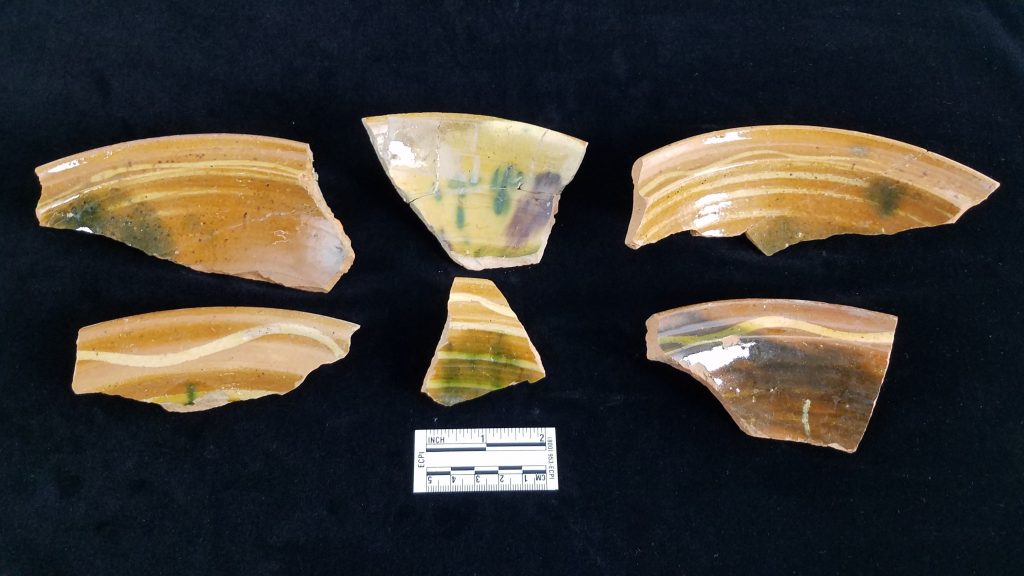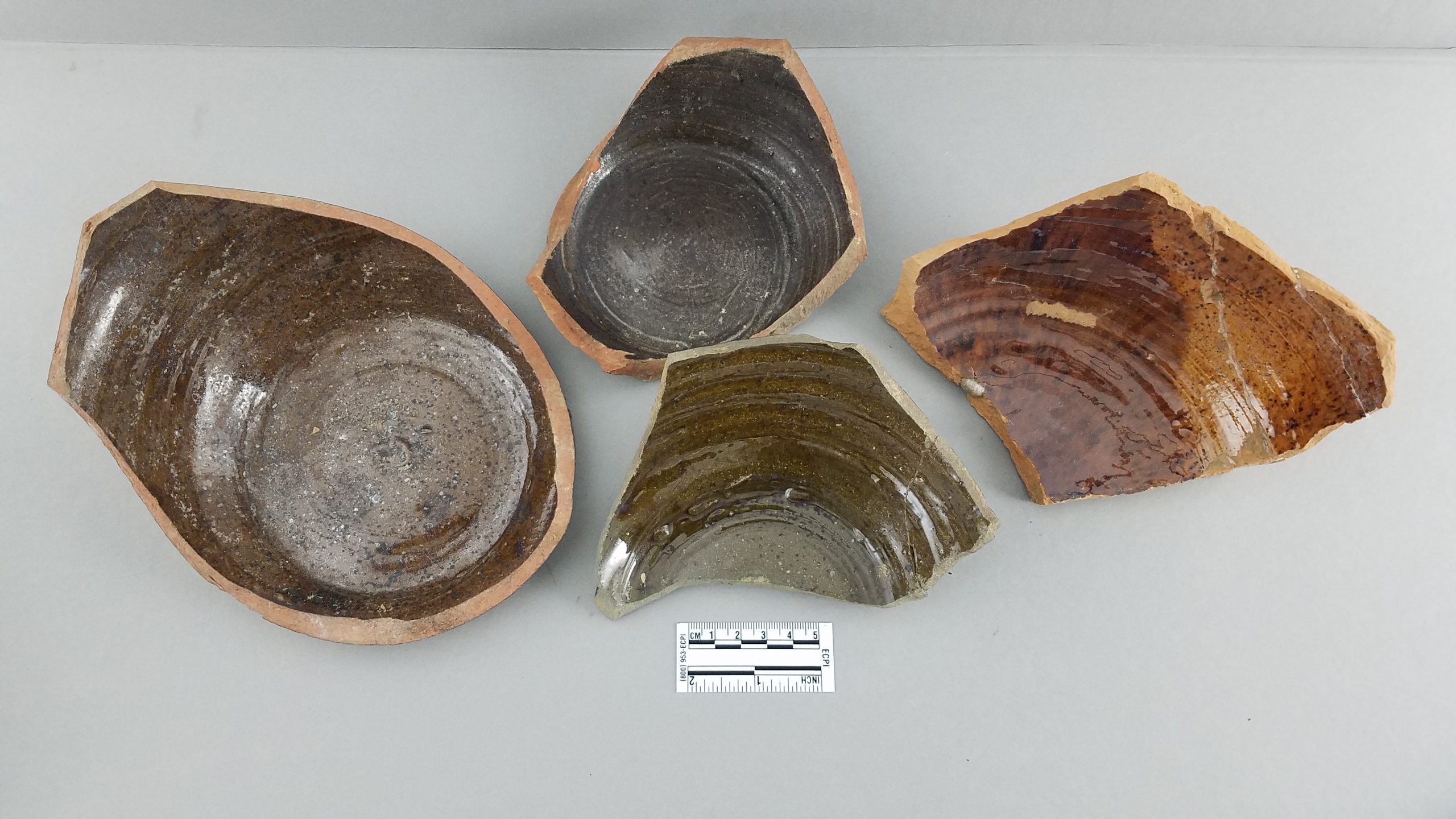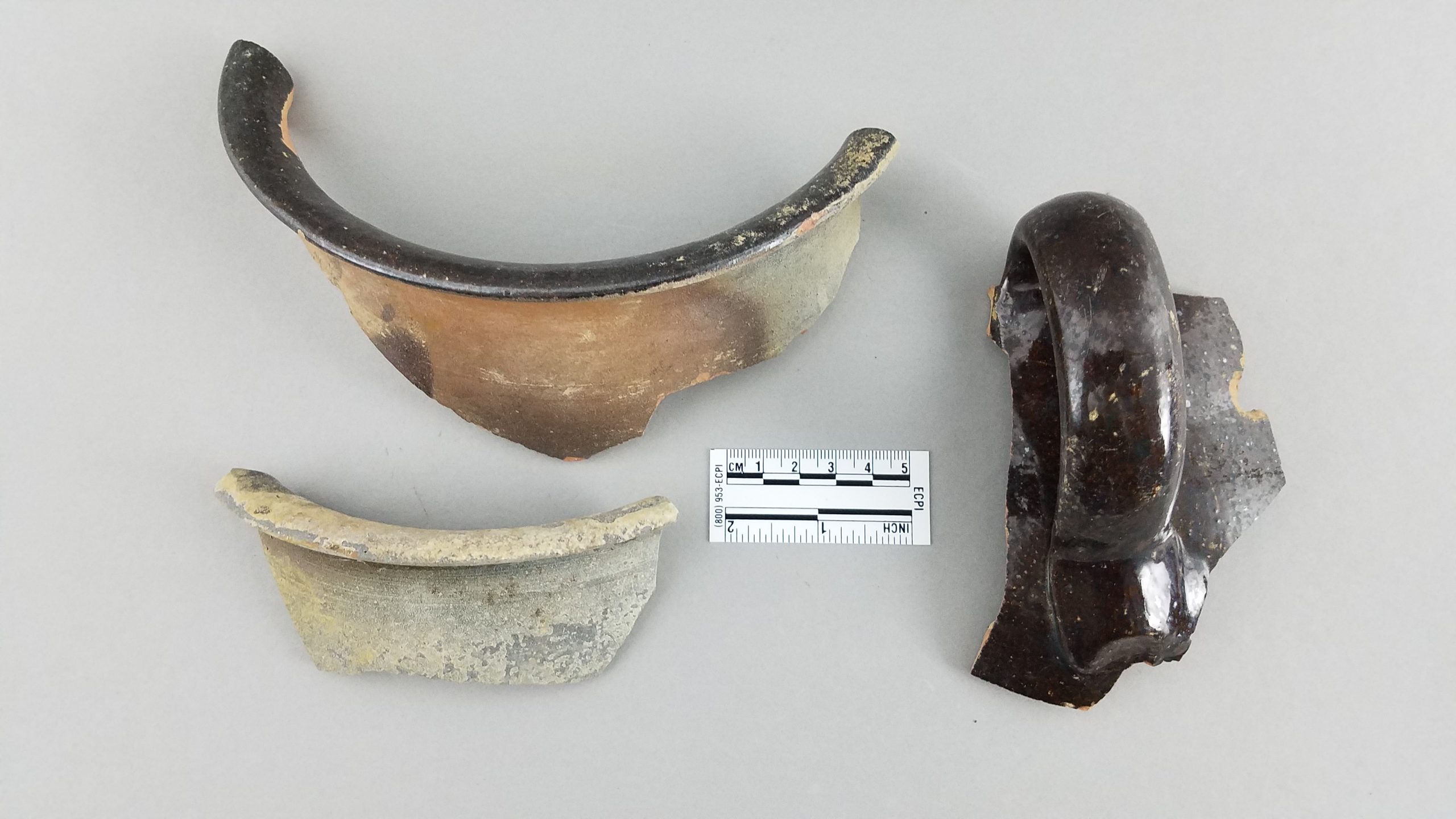Explore Delaware’s Green roots in redware pottery
By Paul Nasca, curator of archaeology at the Division of Historical and Cultural Affairs
Archaeological exploration at the Green Pottery site in Smyrna has revealed an important collection of pottery fragments that are now in the care and study of archaeologists at the Delaware Division of Historical and Cultural Affairs. The collection came to the Division by a generous donation from a private donor who is both a historian and scholar of early Delaware ceramics.
The history of Green Pottery began in 1764 when Charles Green Jr. purchased a one-quarter acre lot from his grandfather at Duck Creek Cross Roads, now known as Smyrna. Green likely learned his potting trade as an apprentice in Philadelphia. Upon his return to Delaware, he established an earthenware pottery at the Duck Creek site. The exact year that production commenced is unclear, but it is certain that the pottery was in operation by the early 1780s. Charles Green operated the pottery until his death in 1809 and the family business was passed to his son, William Green, who continued to manufacture pottery at the site until 1817.

The Green Pottery is the earliest operation of its kind in Kent County, Delaware. The site was the focus of an archaeological investigation in 1991 by both avocational and professional archaeologists, and this collection originates from that scientific endeavor. The collection contains well over 1,000 fragments of redware pottery produced at the site.
The local iron-rich clay used to make the pottery turned red when fired in the kiln, giving it the name redware. The new collection includes food preparation and storage vessels, such as milk pans, pots, jars and jugs, as well as food service wares like pitchers, bowls, plates, mugs and cups. Other specialized items, such as a chamber pot used long before the invention of indoor plumbing, are also in the collection.
Because the earthenware vessels were made of porous redware, all have some form of a glaze to make them impervious to liquids. These glazes range from a thick coating of purplish-brown manganese to a delicate coating of white clay covered in a shiny lead glaze that gives the pottery a yellow appearance. More delicate wares are often decorated with lines or splashes of oxides that turn purple and green when fired.
The collection contains a broad sampling of the wares produced at the Green Pottery site and also provides an insight into domestic craft production of the late-colonial period in the formative years of the fledgling United States. This was a critical period when America’s economy was largely dependent on imported goods from England and Europe that were at times difficult to obtain.


The Green family met the demand for durable goods by providing area residents with an affordable, locally produced product. There is no other collection in state archaeological curation that captures this level of detail on domestic production and economy, especially in Kent County, outside Delaware’s primary production center of Wilmington.
In the months to come, the Green Pottery collection will be sorted, numbered, cataloged and housed under modern curatorial standards, and will serve as the basis for future study and public display of this rich collection of Delaware’s potting heritage.
May is Delaware Archaeology Month, so make sure to check out other interesting finds and news through the Archaeological Society of Delaware. To learn more about Delaware’s potting history, pick up a copy of the 2005 publication “Early Potters and Potteries of Delaware: Historical and Commercial Perspectives 1760-1890” by James R. Koterski.


